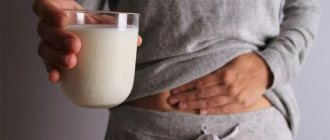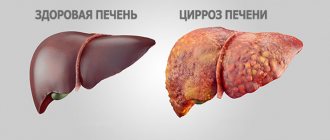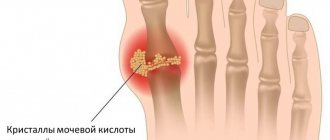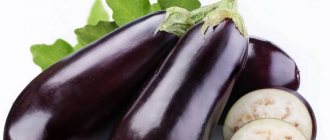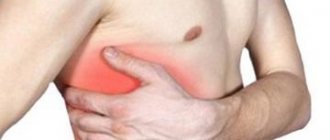11/25/2019 Article
- general characteristics
- Table "Do's and Don'ts"
- Menu for the week
- Diet modifications Diet “Table 1A”
- Diet "Table 1B"
The “1 table” diet , developed by the Soviet nutritionist M.I. Pevzner, is prescribed for the following diseases:
- peptic ulcer of the stomach and duodenum during the recovery period after a sharp exacerbation and with a mild exacerbation;
- mild exacerbation of chronic gastritis with preserved or increased secretion;
- acute gastritis during the recovery period.
The “1 table” diet is considered tough, but it is designed to support the digestive tract and help it recover.
Find a trusted dietitian in your city and make an appointment online
Consultation with a nutritionist
general characteristics
Goal of the diet:
moderate chemical, mechanical and thermal sparing of the gastrointestinal tract with adequate nutrition, reducing inflammation, improving the healing of ulcers, normalizing the secretory and motor functions of the stomach.
General characteristics:
In terms of calories, protein, fat and carbohydrate content, it is a physiologically complete diet. Strong stimulants of gastric secretion, irritants of its mucous membrane, the portion that lingers in the stomach and difficult to digest foods and dishes are limited. Food is prepared mainly pureed, boiled in water or steamed. Some dishes are baked without a crust. Fish and non-rough meats are allowed in pieces. Table salt is moderately limited. Very cold and hot dishes are excluded.
Chemical composition and calorie content:
- carbohydrates - 400-420 g;
- proteins - 90-100 g (60% animals),
- fats - 100 g (30% vegetable),
- calories - 2800-3000 kcal;
- sodium chloride (salt) 10-12 g,
- free liquid - 1.5 l.
Diet:
5-6 times a day. Before bed: milk, cream.
Table 1a
Therapeutic diet option table 1A is one of diet No. 1. Usually the diet is prescribed in the first week of treatment for an exacerbation of a peptic ulcer or for gastritis during an exacerbation. The menu is more abbreviated, but the treatment period is also shorter. Among the features: food should be warm, proper drinking balance, daily calorie content - 2000 kcal. You need to eat in small portions, five to six times a day.
shutterstock.com
Flour, raw fruits and vegetables, sour cream, cottage cheese, cheese, sauce, and spices are excluded. You can eat soft, porridge-like foods without additives, boil or steam food.
Channel about healthy lifestyle in telegram! Subscribe
Do's and don'ts
Recommended and excluded foods and dishes of the “1 table” diet:
Table “What is allowed and what is not allowed”
| Products and dishes | What is possible | What not to do |
| Soups | From permitted pureed vegetables in carrot and potato broth, milk soups from pureed or well-cooked cereals (rolled oats, semolina, rice, etc.), vermicelli with the addition of pureed vegetables, milk pureed soups from vegetables: pureed soup from pre-cooked chicken or meat, from mashed sweet berries with semolina. Flour for soups is only dried. Soups are seasoned with butter, egg-milk mixture, and cream. | Meat and fish broths, mushroom and strong vegetable broths, cabbage soup, borscht, okroshka. |
| Bread and flour products | Wheat bread made from premium and 1st grade flour, yesterday baked or dried; dry biscuit, dry biscuits, 1-2 times a week well-baked savory buns, baked pies with apples, boiled meat or fish and eggs, jam, cheesecake with cottage cheese. | Rye and any fresh bread, butter and puff pastry products. |
| Meat and poultry | Low-fat, without tendons, fascia, skin in birds. Steamed and boiled dishes from beef, young lean lamb and trimmed pork, chicken, turkey. Boiled dishes, including pieces of lean veal, chicken, and rabbit. Steamed cutlets, meatballs, quenelles, soufflés, purees, zrazy; beef stroganoff made from boiled meat. Boiled meat baked in the oven. Boiled tongue and liver. | Fatty or stringy varieties of meat and poultry, duck, goose, canned food, smoked meats. |
| Fish | Low-fat types without skin, in pieces or in the form of cutlets: boiled in water or steamed. | Fatty, salted fish, canned food. |
| Dairy | Milk, cream. Non-acidic kefir, yogurt, acidophilus. Fresh non-acidic cottage cheese (mashed) and sour cream. Curd dishes: baked cheesecakes, soufflé, lazy dumplings, puddings. Mild grated cheese, occasionally in slices. | High acidity dairy products, sharp, salty cheeses. Limit sour cream. |
| Eggs | Soft-boiled, steam omelette. | Hard-boiled and fried eggs. |
| Cereals | Semolina, rice, buckwheat, oatmeal. Porridges cooked in milk or water are semi-viscous and mashed (buckwheat). Steam souffles, puddings, cutlets from ground cereals. Vermicelli, finely chopped boiled pasta. | Millet, pearl barley, barley, corn grits, legumes, whole pasta. |
| Vegetables | Potatoes, carrots, beets, cauliflower, limited green peas. Steamed or boiled in water and pureed (mashed potatoes, soufflés, steam puddings). Unpureed early pumpkin and zucchini. Finely chopped dill - in soups. Ripe non-acidic tomatoes up to 100 g. | White cabbage, turnips, rutabaga, radishes, sorrel, spinach, onions, cucumbers, salted, pickled and pickled vegetables, mushrooms, canned vegetable snacks. |
| Snacks | Salad of boiled vegetables, meat, fish. Boiled tongue, liver pate, doctor's sausage, milk sausage, dietary sausage; jellied fish in vegetable broth, sturgeon caviar, occasionally soaked low-fat herring and mincemeat, mild cheese, unsalted ham without fat. | All spicy and salty snacks, canned food, smoked foods. |
| Fruits, sweet dishes, sweets | Mashed, boiled and baked sweet berries and fruits. Purees, jelly, mousses, jellies, sambuca, compotes (mashed). Meringues, snowballs, butter cream, milk jelly. Sugar, honey, sour jam, marshmallows, marshmallows. | Sour, insufficiently ripe, fiber-rich fruits and berries, unprocessed dried fruits, chocolate, ice cream. |
| Sauces and spices | Milk (bechamel) without sautéing flour, with the addition of butter, sour cream, fruit, milk-fruit. Limited - dill, parsley, vanillin, cinnamon. | Meat, fish, mushroom, tomato sauces, horseradish, mustard, pepper. |
| Beverages | Weak tea, tea with milk, cream, weak cocoa and coffee with milk. Sweet juices from fruits and berries. Rose hip decoction. | Carbonated drinks, kvass, black coffee. |
| Fats | Unsalted butter, premium quality cow's ghee. Refined vegetable oils added to dishes. | All other fats. |
Recommendations and prohibitions for the 1st table
Soup-pre is easily over-poisoned
When organizing dietary meals “table 1”, you must adhere to two basic rules:
- Strictly and without deviation follow the nutritional principles defined by the diet.
- Stick to a basic list of permitted and prohibited products.
Such symbiosis in the organization of diet helps to significantly reduce the mechanical, chemical and thermal load on the gastrointestinal tract, which contributes to the accelerated treatment of existing ailments. For example, a well-organized first table increases the rate of regeneration of affected tissues, reduces existing inflammation and leads to normalization of the secretory-motor function of the stomach.
In this paragraph of the article, we will pay attention to the permitted and prohibited foods for dietary food “table 1”. The first group should include:
- From protein foods - all types of lean dietary meat (from rabbit to veal), low-fat fish, liver and tongues of animals, dishes from low-fat types of minced meat, steamed meat, eggs (but no more than two or three per day).
- From foods rich in carbohydrates - almost all vegetables (potatoes, cauliflower, greens, etc.), steamed or boiled, any fruits with a soft structure (baked apples, plums, pears), cereals, flour products for cooking, dried bread, cookies.
- From fatty foods - butter without salt and vegetable oils.
By the way, the consumption of dairy products is not prohibited. If desired, you can include any dairy product in your diet - from milk to cheese. The main thing is that it is not too fatty and is well accepted by the stomach in terms of absorption.
As for drinks, it is better to give preference to juices, decoctions, green tea, compotes and fruit drinks. Now that everything is clear about permitted food, let’s turn our attention to the list of prohibited foods. These include:
- any broths;
- fatty types of dishes (some types of fish, caviar, meat);
- mushrooms;
- cereal;
- canned food;
- products made from butter or puff pastry;
- coffee, cocoa and black tea;
- vegetables that are difficult to digest;
- soda of all types (from Narzan to lemonade);
- alcoholic drinks;
- sauces for food (mayonnaise, ketchup, etc.);
- any other food not included in the permitted list.
Important! Table 1 and its varieties “1a”, “1b” do not have any differences in terms of the food products used. These diets differ only in calorie content and duration of adherence.
Menu for the week: what you can eat
An example of a menu for every day according to the “1 table” diet:
Option #1
- 1st breakfast: soft-boiled egg, rice porridge with milk, tea with milk.
- 2nd breakfast: fresh non-sour cottage cheese, rosehip decoction.
- Lunch: oat milk soup, steamed meat balls with carrot puree, fruit mousse.
- Afternoon snack: rose hip decoction, crackers.
- Dinner: boiled fish, baked in milk sauce, mashed potatoes, tea with milk.
- At night: milk.
Option No. 2
- 1st breakfast: steam omelette, crumbly buckwheat porridge, tea with milk.
- 2nd breakfast: baked apple with sugar.
- Lunch: rice milk soup, steamed meat soufflé with mashed potatoes, apple jelly.
- Afternoon snack: decoction of wheat bran with sugar and crackers.
- Dinner: steamed curd soufflé, fruit jelly.
- At night: cream.
Option #3
- 1st breakfast: soft-boiled egg, semolina milk porridge, jelly.
- 2nd breakfast: curd pudding.
- Lunch: vegetarian potato soup, boiled meat, baked with bechamel sauce, boiled carrots, boiled dried fruit compote.
- Afternoon snack: rose hip decoction, savory bun.
- Dinner: boiled fish, baked with milk sauce, carrot-apple roll, tea with milk.
- At night: milk.
Option No. 4
- 1st breakfast: lazy dumplings with sour cream, oatmeal porridge, compote.
- 2nd breakfast: fresh non-sour cottage cheese, rosehip decoction.
- Lunch: milk soup with noodles, turkey quenelles with a side dish of boiled cauliflower, weak tea with milk.
- Afternoon snack: decoction of wheat bran with dry biscuit.
- Dinner: salad of boiled vegetables and boiled sausage, berry mousse, jelly.
- At night: cream.
Option #5
- 1st breakfast: soft-boiled egg, rice milk porridge.
- 2nd breakfast: baked pear with sugar, dried fruit compote.
- Lunch: pureed vegetable soup, boiled pike perch, vermicelli, weak tea.
- Afternoon snack: berry mousse.
- Dinner: meat soufflé, cottage cheese casserole, jelly.
- At night: milk.
Option #6
- 1st breakfast: steam omelette, semolina milk porridge, dried fruit compote.
- 2nd breakfast: fresh non-sour cottage cheese, rosehip decoction.
- Lunch: oat milk soup, boiled rabbit, mashed potatoes, weak tea with milk.
- Afternoon snack: decoction of wheat bran with dry biscuit.
- Dinner: boiled fish, baked with milk sauce, carrot-apple roll, jelly.
- At night: cream.
Option No. 7
- 1st breakfast: steam omelette, vermicelli with grated cheese, weak tea, meringue.
- 2nd breakfast: berry jelly, compote.
- Lunch: pureed vegetable soup, boiled carp with bechamel sauce, boiled rice, jelly.
- Afternoon snack: cottage cheese casserole, weak tea.
- Dinner: vegetable salad, turkey meatballs with a side dish of cauliflower.
- At night: milk.
Dietary and medical nutrition: large selection, low prices, promotions and discounts. Delivery as soon as possible in your city.
Diet food
Diet table 1: products
Acceptable foods and dishes can be divided into the following groups:
- Soups: slimy consistency, you can add semolina, oatmeal, pearl barley or rice, cream or butter;
- Cereals: liquid slimy porridges made from semolina, pureed buckwheat, rice or oatmeal. You can also add cream or milk;
- Meat and fish: lean veal, beef, chicken and turkey, without skin, fat, fascia and tendons. To prepare it, you need to boil it, pass it through a grater or meat grinder, and use it as a puree or soufflé;
shutterstock.com
- Eggs: soft-boiled or steamed omelet, no more than three eggs per day;
- Fruits and berries: sweet fruits, boiled or baked; compotes, rosehip decoction;
- Dairy products: milk, cream, steam soufflé from freshly prepared pureed cottage cheese.
- Drinks: weak tea with milk or cream, weak cocoa or coffee with milk;
- Additionally: jelly, sweet fruit jelly, milk jelly, honey.
- Excluded: vegetables, herbs, sweets and flour.
Dishes are prepared in unsalted butter or refined vegetable oil. Other types of oils are excluded.
shutterstock.com
Diet modifications
The “1 table” diet has two modifications: 1A and 1B.
Diet "Table 1A"
“Table 1A” is indicated for exacerbations of peptic ulcer disease, exacerbations of chronic gastritis with high acidity. The task of table No. 1a is to provide the body with all the necessary nutrients during an exacerbation and to provide favorable conditions for reducing inflammation.
All foods on the Table 1A diet must be boiled, steamed, baked without crust, and then chopped. Chopped, pureed, slimy food is the main condition and difference of this modification of the table. During an exacerbation, porridges should be crushed or slimy, poultry and fish should also be chopped and cooked in the form of soufflés or steamed cutlets. Vegetables and fruits are also thermally processed and crushed.
The list of allowed foods on table No. 1 is suitable for the diet, with the exception of all flour products, fermented milk products and confectionery. The nutritional value of this table is lower and is reduced by carbohydrate foods, since the patient is on bed rest.
The duration of the diet is on average 10 days. After this, “Table 1B” is prescribed for 14 days.
Recipes
Diet pate
Ingredients: 100 g beef, two potatoes, medium carrots.
Boil the products, pass through a meat grinder: pour ½ cup of milk into the prepared minced meat, stirring, and simmer over low heat. Remove after 3-5 minutes, add a little salt.
Egg porridge
Ingredients: two eggs, 60 ml of milk, a little salt, two teaspoons of butter.
Dissolve eggs with milk, beat, add a little salt, add butter. Pour the resulting mass into a small bowl and place it in a pan of water. Cook, stirring constantly, until the consistency of porridge.
Pour the egg mixture into a saucepan with a small amount of warm water, cook like regular porridge until thickened. Strain the rest of the water.
Carrot soufflé with cottage cheese and honey
Ingredients: 500 g carrots, 250 g cottage cheese, 150 g milk, teaspoon sugar, egg, 50 g semolina, cube of butter.
Cut the carrots into pieces, pour in milk, boil until tender. Grate or beat in a blender, add grated cottage cheese, sugar, yolk and semolina. Mix the mixture well, and only then add the whipped egg white. Place in a bowl greased with oil and steam. If desired, serve with honey.
Curd soufflé
Ingredients: 250 g of cottage cheese (up to 9% fat), three eggs, a little sugar, 250 ml of milk, semolina flour.
Wipe the cottage cheese, add the yolk, sugar, milk, flour. Beat and add the whites, mix the mixture well. Place in a mold and steam. Serve with condensed milk.
Baked cutlets
Ingredients: 2 tablespoons of cottage cheese (fat content up to 9%), egg, 150 g of beef, butter.
Meat without tendons and fascia: boil and cool. Pass the beef and cottage cheese through a meat grinder twice. Beat the egg, leave a small part to grease the cutlets, pour the rest into the minced meat. Add oil, mix well until smooth. Form cutlets, place on a baking sheet, brush with egg. Bake in the oven until done.
Unacceptable products on the menu table No. 1
Mandatory exclusion is subject to food products that increase the secretion of gastric juice: hot and spicy foods (spices, hot sauces, seasonings, smoked meats), fatty foods (lard, fatty red meats, fast food), coarse fiber foods (rye and any fresh bread, baked goods, pearl barley and barley). This diet does not allow the consumption of difficult-to-digest and digestible foods that enhance peristalsis (mushrooms, cabbage, hard-boiled eggs, carbonated drinks, strong tea and coffee). Sour unripe fruits, fruits and berries are not allowed for consumption.
How the diet is organized
From general to specific. Having selected a specific therapeutic dietary food, it is important to adjust it to the individual needs of the body, as well as adhere to important principles:
- ratio of useful and nutrient substances.
It is important to understand that not every food with high nutritional value will be beneficial. And not every product, including healthy ones, will be absorbed properly, especially if there are disorders of the gastrointestinal tract. At home, it can be difficult to achieve the ideal ratio; in this case, it is necessary to use special mixtures as additional nutrition. They are already completely balanced, so you can regulate and adjust your diet taking into account the incoming substances. Nutrien® Standard is available in a convenient package with a straw; this mixture is easily digestible and saturates the body with useful and nutrient substances; - BJU level control.
Proteins, fats and carbohydrates are the main indicators for any product. But their ratio must also be correctly selected. For example, in case of diabetes mellitus, the amount of carbohydrates, primarily easily digestible ones, is reduced. In case of chronic kidney disease, reduce protein intake, and in case of high cholesterol and diseases of the cardiovascular system, reduce fat intake and regularly monitor blood cholesterol levels; - choosing foods rich in dietary fiber.
They help normalize the functioning of the gastrointestinal tract, improve absorption and, accordingly, digestibility of incoming food. They also affect the content of beneficial bacteria in the intestines. All this can help the body absorb useful substances and, as a result, improve the healing and recovery process; - control of the presence of microelements and vitamins.
Depending on the disease, the body needs certain microelements. For example, if you have anemia, you need to include foods rich in iron in your diet. In case of hypovitaminosis (lack of any vitamin), you need to consume food rich in the corresponding vitamins; - organization of nutrition during the day.
Eating according to a clear schedule at the same hours allows you to develop a conditioned reflex: at a set time, gastric juice begins to be released much more actively, which affects the complete digestion of food. This reduces energy consumption and gives you a feeling of satiety for a long time.
What is pancreatitis
Pancreatitis is a disease that develops due to inflammation of the pancreas. For various reasons, digestive enzymes are not released into the duodenum and are activated in the gland. As a result, damage to the internal tissues of the organ occurs, or, more simply, self-digestion.
There are two types of pancreatitis - acute and chronic. In the first case, inflammation occurs suddenly or within a few days. Acute pancreatitis is characterized by:
- feeling sick or vomiting;
- high temperature (above 38 degrees);
- severe abdominal pain;
- diarrhea.
The most common causes of acute pancreatitis in medicine include cholelithiasis and alcohol abuse.
The pancreas is responsible for the production of digestive enzymes and hormones, including insulin
Chronic pancreatitis develops over many years due to regular inflammation. In this case, damage to the organ is usually irreversible. The following symptoms indicate chronic inflammation of the pancreas:
- abdominal pain (mild to severe);
- weight loss;
- nausea and vomiting;
- diarrhea;
- yellowing of the skin and eyes;
- periodic exacerbations of inflammation;
- decreased production of insulin and enzymes.
Chronic pancreatitis is most often caused not only by long-term alcohol abuse or smoking, but also by autoimmune and genetic factors (for example, cystic fibrosis).
For mild forms of the disease, treatment may be limited to a special diet and enzyme support. In severe cases, doctors resort to steroid therapy or surgery, including complete removal of the pancreas.

